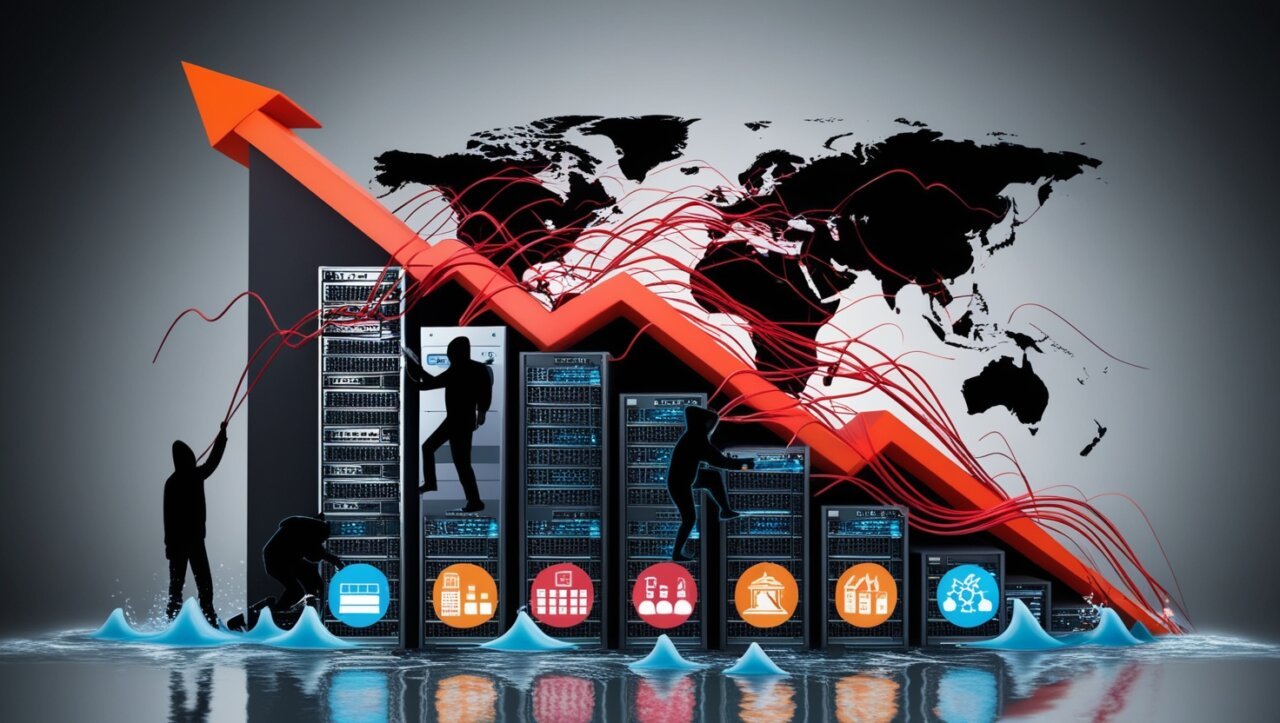In the ever-evolving landscape of cyber threats, Distributed Denial-of-Service (DDoS) attacks and hacktivism have emerged as significant concerns for enterprises worldwide. A recent report by NETSCOUT reveals a disturbing trend: a 43% surge in application-layer attacks and a 30% increase in volumetric attacks, particularly in Europe and the Middle East.
The Rise of Hacktivist Groups
Hacktivist groups, driven by ideological motivations, have intensified their cyber warfare, targeting critical infrastructure sectors such as banking and finance, government, and utilities. These attacks, often coordinated and sophisticated, aim to disrupt essential services and sow chaos. The NoName057(16) group, a pro-Russia hacktivist organization, has been particularly active, employing advanced techniques like HTTP/S GET and POST floods to overwhelm targeted systems.
The Evolving Tactics of DDoS Attacks
DDoS attacks have become increasingly sophisticated, leveraging innovative technologies and strategies. Key trends observed in the first half of 2024 include:
- Botnet Proliferation: The emergence of botnets like Zergeca and the evolution of DdoSia have expanded the arsenal of attackers. These botnets, often controlled by malicious actors, can launch large-scale attacks with relative ease.
- Distributed Botnet C2 Infrastructure: By decentralizing command-and-control (C2) infrastructure, attackers can make their operations more resilient and difficult to disrupt.
- DNS over HTTPS (DoH) Exploitation: The use of DoH for C2 communication allows attackers to conceal their activities and evade detection.
The Impact on Enterprises
The consequences of DDoS attacks can be severe for enterprises. Successful attacks can lead to:
- Service Disruptions: Critical services may become inaccessible, impacting business operations and customer experience.
- Financial Losses: Outages can result in significant revenue loss and damage to brand reputation.
- Regulatory Compliance Risks: Failure to maintain adequate security measures can lead to legal and financial penalties.
- Competitive Disadvantage: Disruptions can erode competitive advantage and hinder innovation.
Mitigating the Threat
To safeguard against DDoS attacks and hacktivism, enterprises must adopt a multi-layered approach:
- Robust DDoS Protection Solutions: Implementing advanced DDoS protection solutions can help mitigate the impact of attacks. These solutions can detect and mitigate attacks in real-time, protecting critical infrastructure.
- Network Security Best Practices: Strong network security practices, such as regular vulnerability assessments, patch management, and intrusion detection systems, are essential to prevent unauthorized access.
- Incident Response Planning: A well-defined incident response plan can help organizations respond effectively to attacks and minimize downtime.
- Employee Training and Awareness: Educating employees about cyber threats and best practices can reduce the risk of human error.
- Threat Intelligence: Staying informed about the latest threat landscape can help organizations proactively defend against attacks.
As the threat landscape continues to evolve, enterprises must remain vigilant and adapt their security strategies accordingly. By investing in robust security solutions, adopting best practices, and staying informed, organizations can effectively mitigate the risks posed by DDoS attacks and hacktivism.

